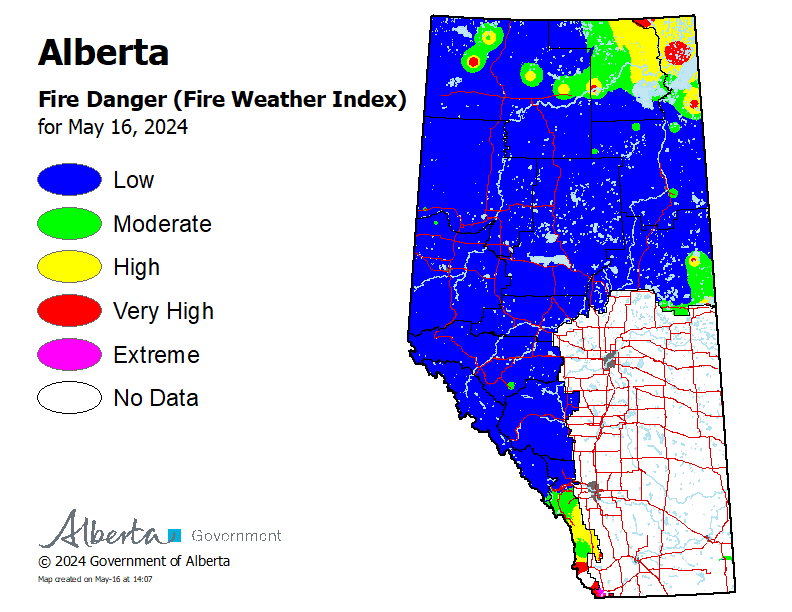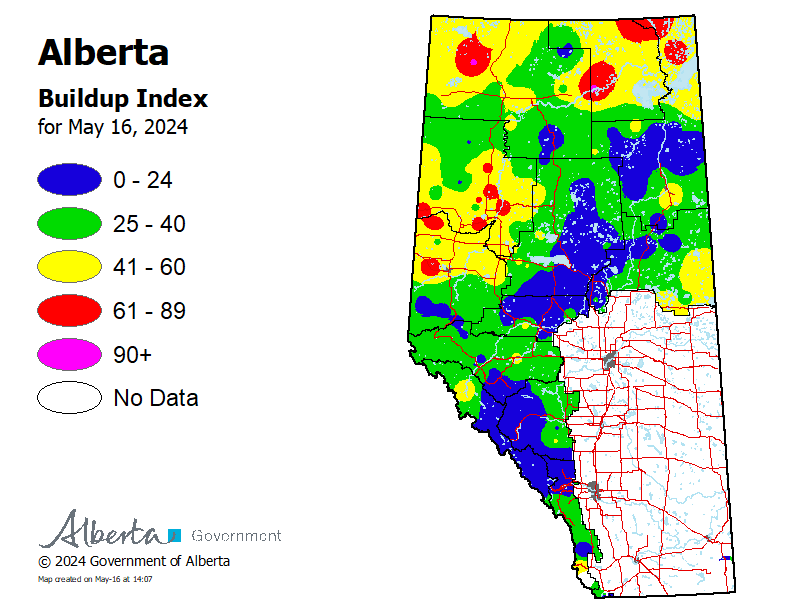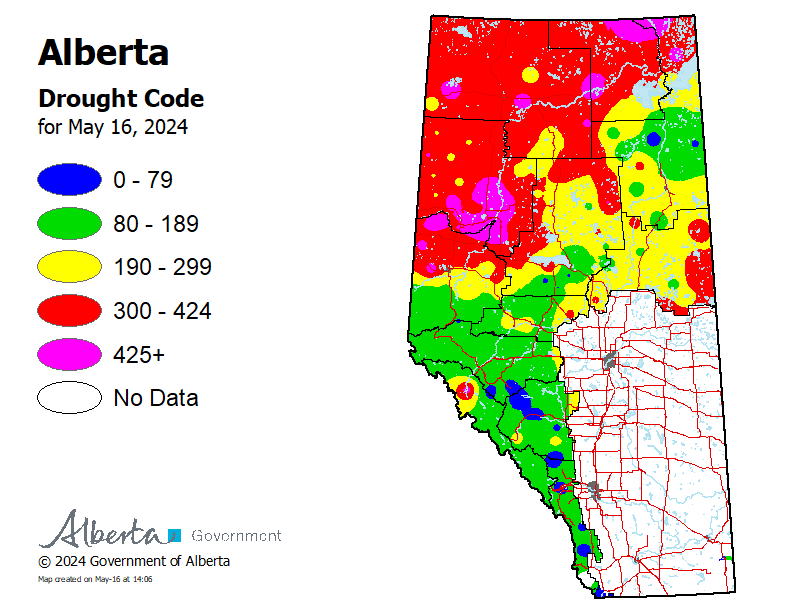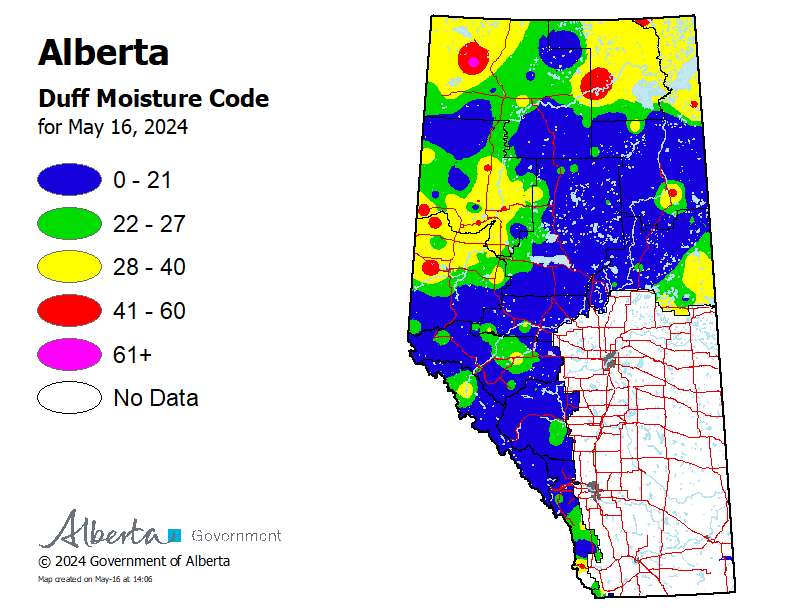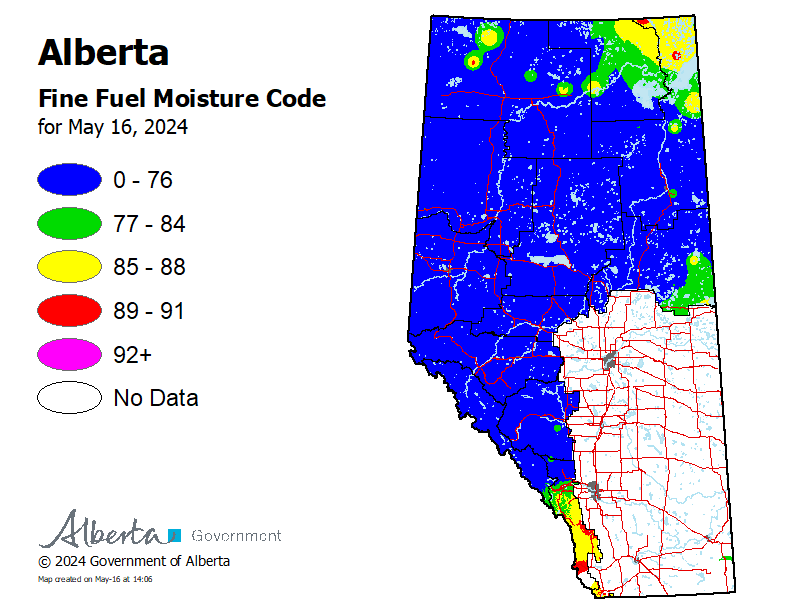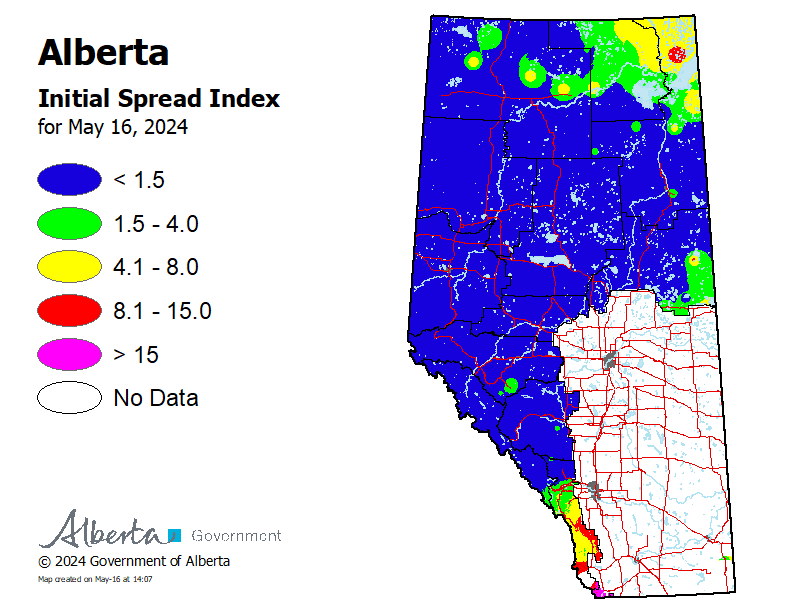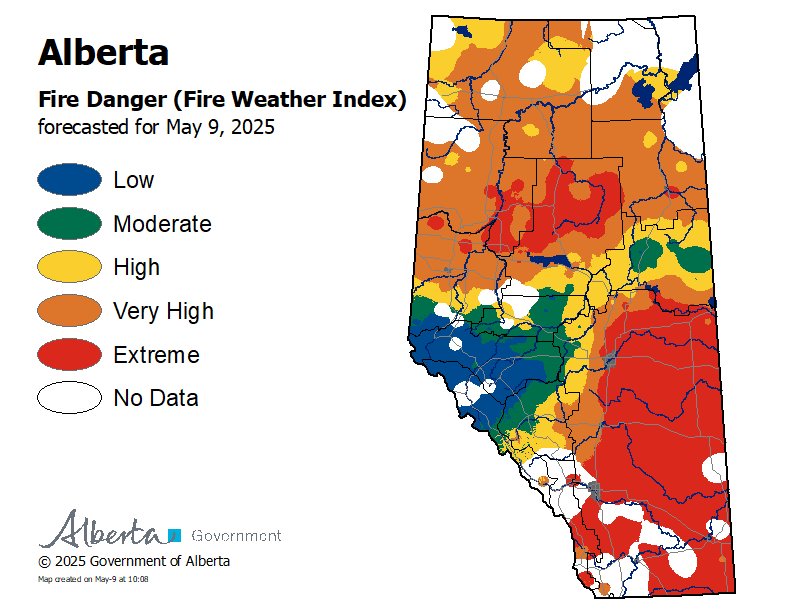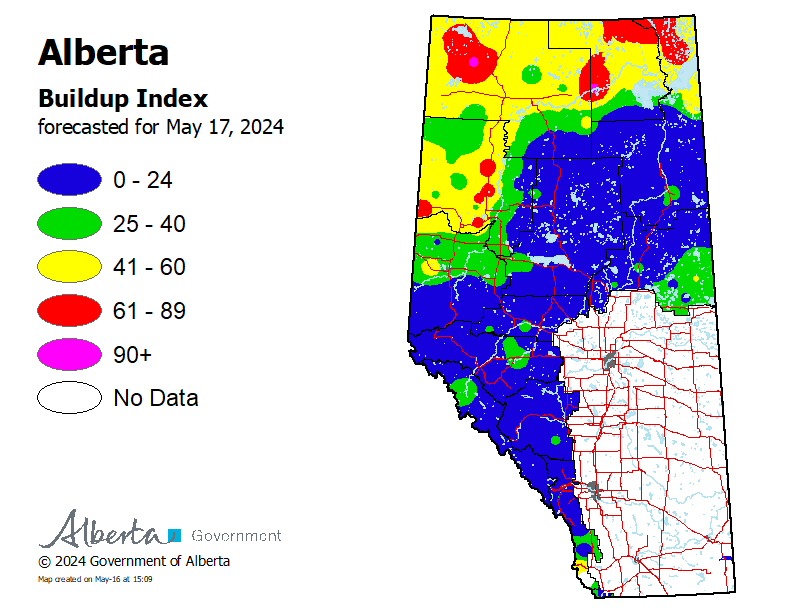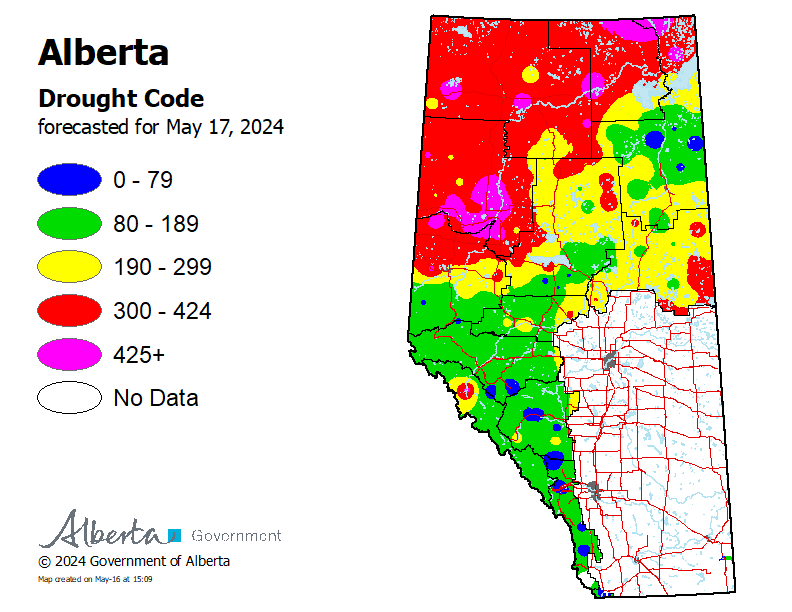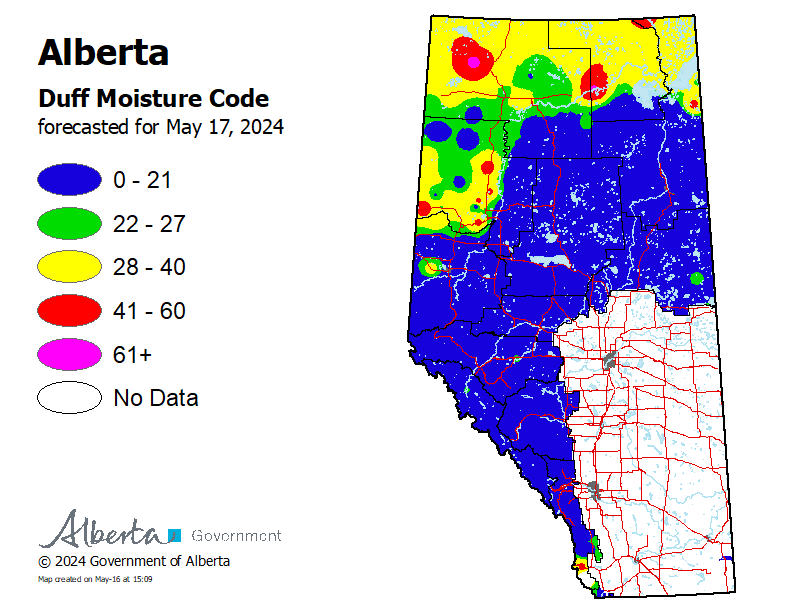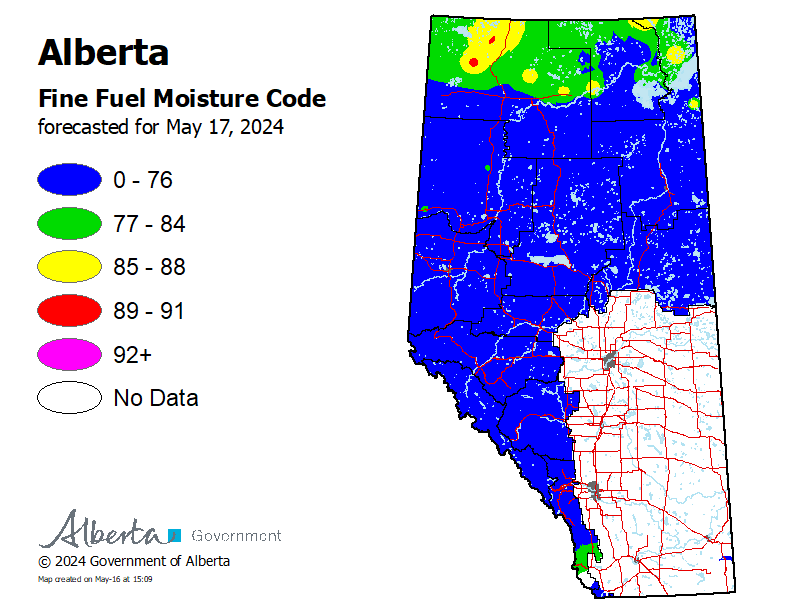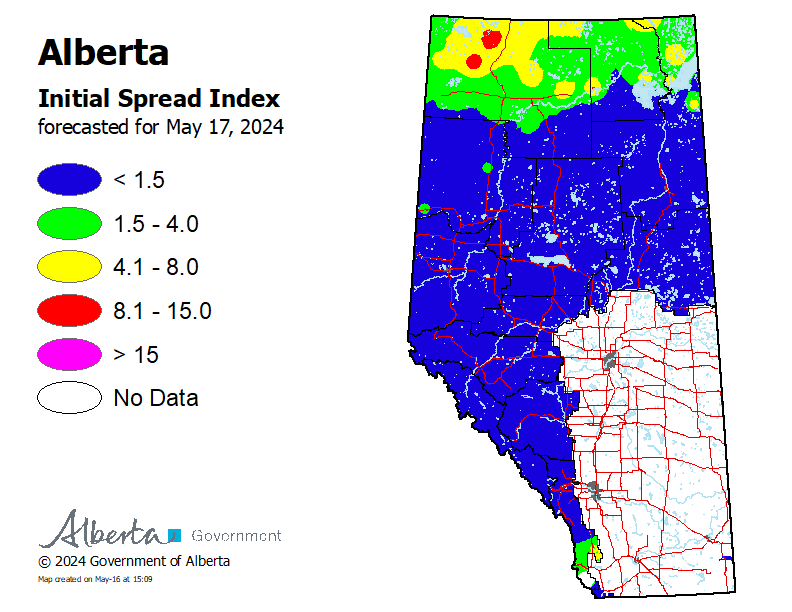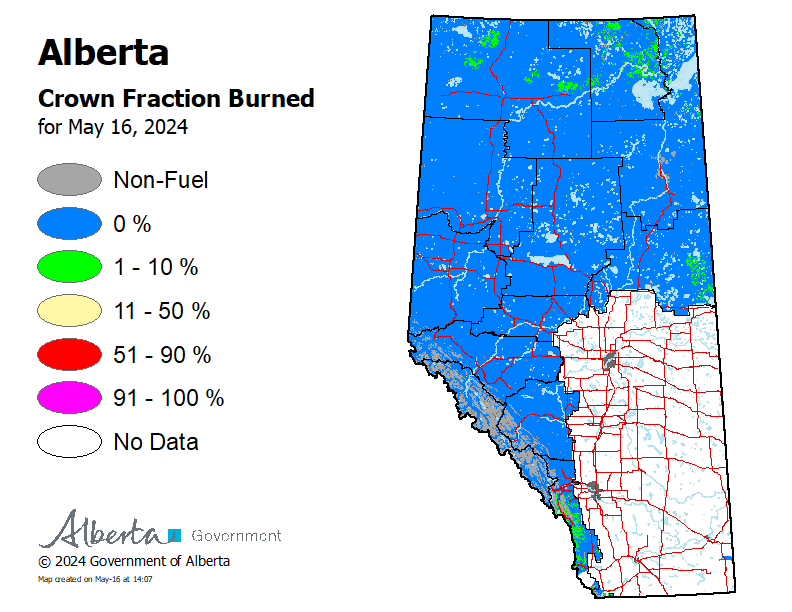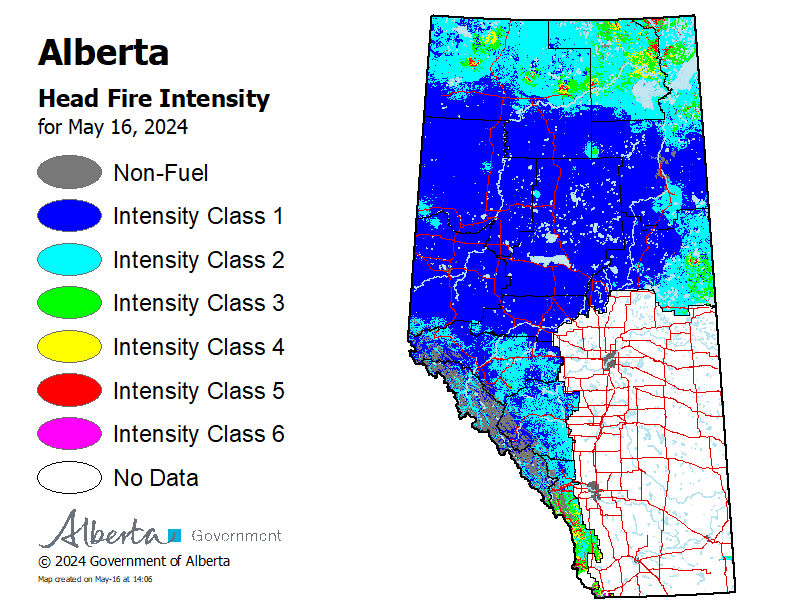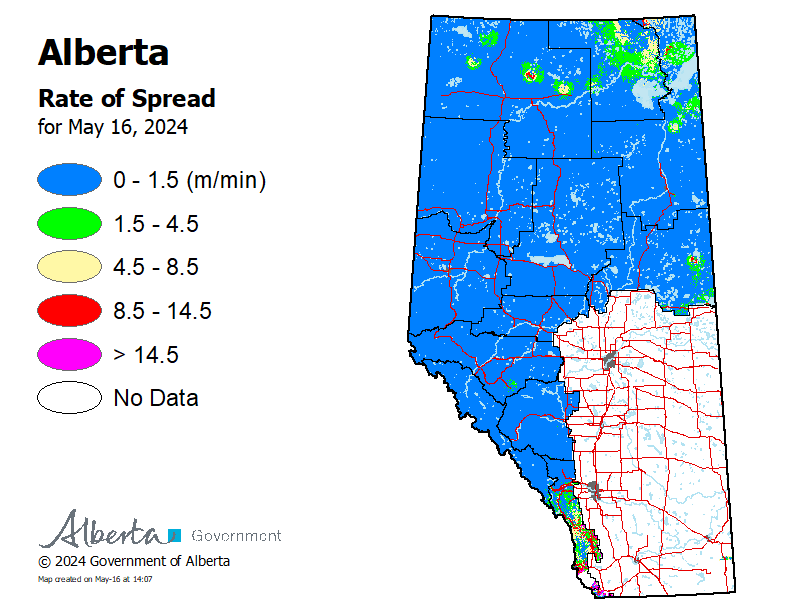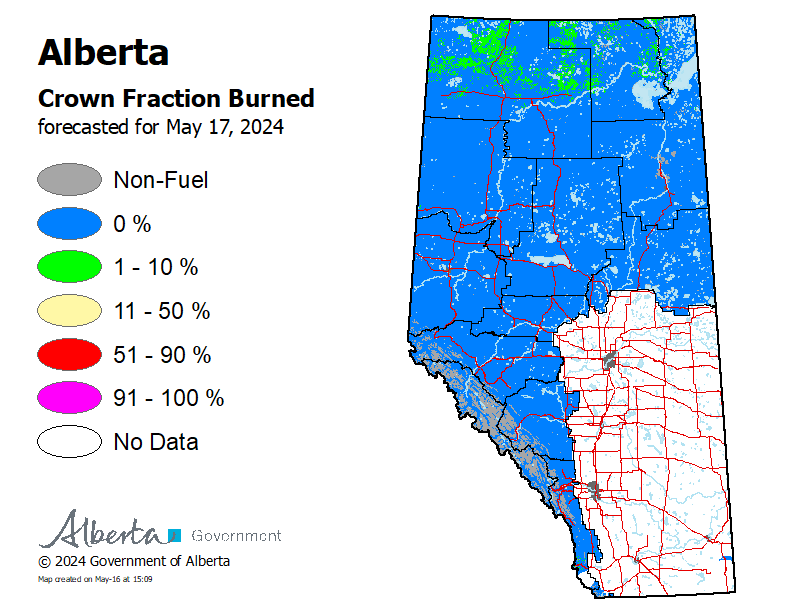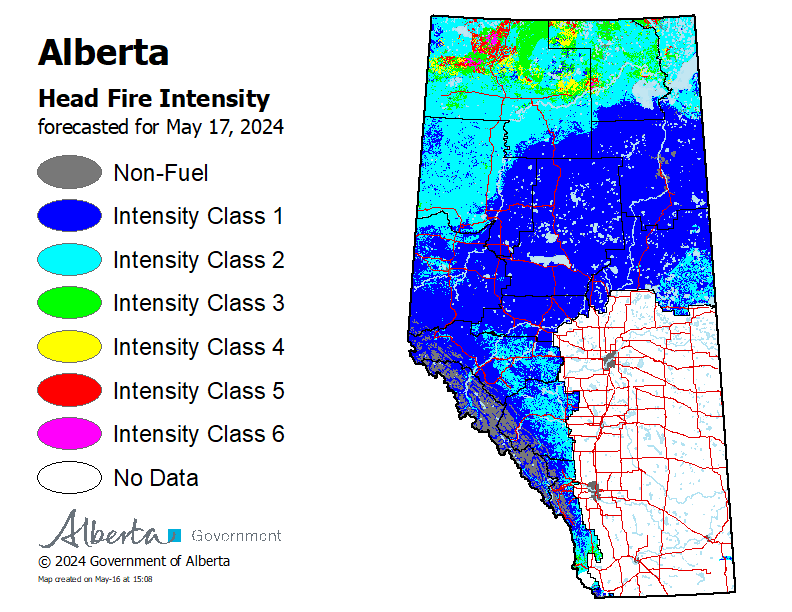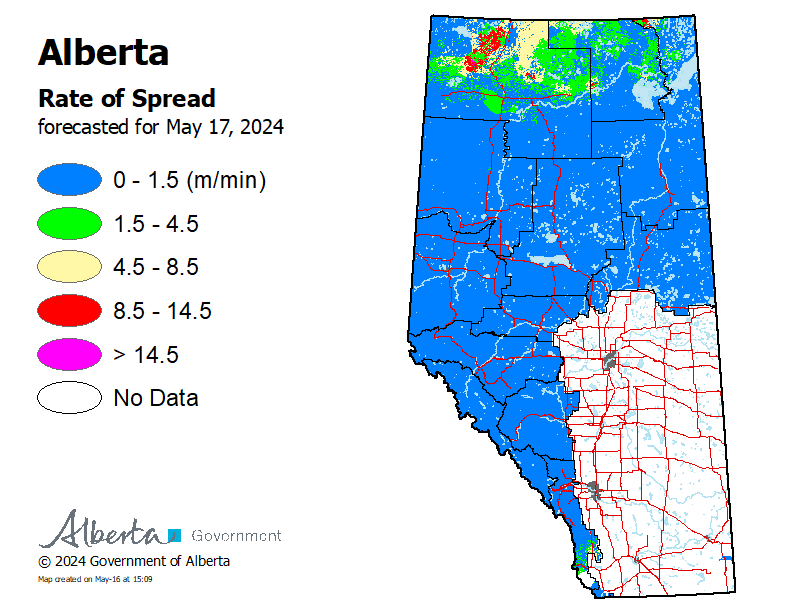Report a wildfire: If you see a wildfire in a forested area call 310-FIRE (3473)
Overview
Fire danger is a general assessment of the fire environment that determines the ease of ignition, rate of spread, difficulty of control and fire impact.
Maps are produced daily during wildfire season, from March 1 to October 31.
The AM/PM weather forecasts can now be found on the Fire weather forecasts and observations page.
Fire Weather Index System
Fire danger is based on the Fire Weather Index System, which is derived from daily observations of temperature, relative humidity, precipitation and wind direction and speed. Low numbers mean wet and high numbers mean dry.
Actual fire danger maps
The following maps of Fire Weather Index codes indicate actual conditions, based on daily observations recorded at 1 pm.
Forecasted fire danger maps
The following maps of Fire Weather Index codes indicate forecasted conditions for the next day, based on the next day’s weather forecast created at 3 pm.
Fire behaviour
Fire behaviour is based on the Fire Behaviour Prediction System, which provides quantitative estimates of potential fuel consumption, fire intensity and head fire spread rate.
Maps are produced daily during wildfire season, from March 1 to October 31.
Contact
For questions about weather data, forecasts and observations:
Email: wf.awcc-weather@gov.ab.ca
Information line: 1-866-394-3473 (FYI-FIRE)
Media inquiries: 780-420-1968
Email: wildfireinfo@gov.ab.ca
